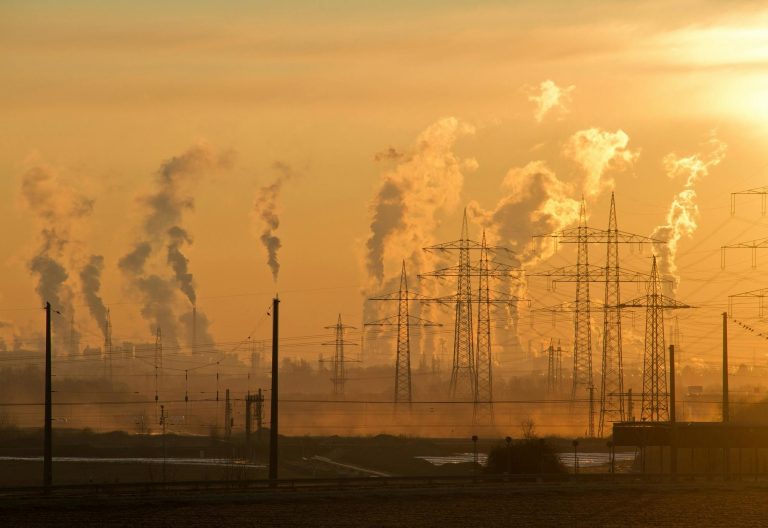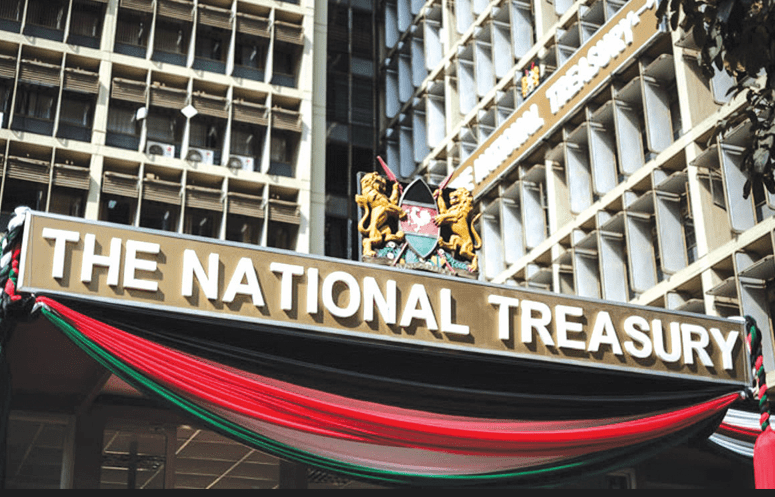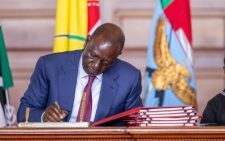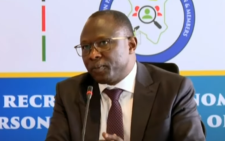Africa’s growth challenges mount amid climate crisis

Africa faces monumental development challenges, yet the continent has tremendous potential for transformation to lift its people out of poverty and underdevelopment.
What ails Africa and what are the solutions to the myriad challenges facing the continent? What are the prospects of salvation for its tormented citizens with Africa at the crossroads of its development agenda?
These are the questions governments and the international community are pondering as Africa reaches a critical turning point for potential scenarios of economic growth and social progress this year and beyond this decade.
Africa’s significant development challenges include economic disparities, political instability and environmental issues, compounded by the triple planetary challenges of climate change, biodiversity loss and pollution. Challenges that are often interconnected and impact various aspects of life on the continent.
Key areas of concern include poverty, food insecurity, climate change and lack of infrastructure. Experts assessed Africa’s economic performance since independence, and identified three distinct periods of economic performance.
They have highlighted the need for improved macroeconomic management and outlined a policy framework for robust development. Africa’s economic trajectory requires sustained reforms to achieve convergence with global living standards.
Growth potential
A report by the Japan International Cooperation Agency (JICA) Research Institute, points at great transformation potential if these reforms and sustained efficient macroeconomic management are maintained.
It reveals that with this trajectory, Africa’s per capita income could grow six-fold by 2050, reaching half the global average, further noting that Africa’s share of global GDP could triple to 9 per cent.
The report indicates that the number of poor people in Africa could decrease to fewer than 50 million from the current estimated 438.6 million people out of an estimated population of 1.54 billion (18 per cent of the global population, according to Statista) living in extreme poverty, with the threshold at US$2.15 a day.
The list of Africa’s development challenges is daunting – poverty, inequality, debt and trade imbalances, infrastructure deficits, food insecurity and political instability.
Add rapid population growth, gender inequality, unemployment and youth demands, the environmental issues of climate change, water scarcity and biodiversity loss, and the continent’s development challenges seem almost insurmountable.
There is immense potential and opportunity for transformative growth and development through good governance backed by compelling statistics and Africa’s resilience in the period after the Covid-19 pandemic that stifled decades of progress.
The African continent is reawakening and this resilience advocates for a renewed commitment to unlocking its full potential and internal growth across all regions, and as an attractive destination for investment and economic diversification.
Stumbling blocks to the potential economic and social transformation of the continent remain the current development practices in Africa and worldwide, including the global financial architecture in which African economies operate.
According to the African Development Bank (AfDB), these factors have left the continent in an unacceptable vicious cycle of poverty, a situation where the high cost of capital and its deployment in low-productivity sectors lead to poor returns on investment and other forms of economic, social and environmental fragilities.
“Due to the state’s limited capacity to collect sufficient revenue, many African countries have only a small fiscal space to meet the basic needs of citizens, perpetuating poverty and inequality,” notes AfDB.
These factors plunge countries into unsustainable debt, with governments borrowing, often at a high cost to fill the growing financing gap, a situation that has exacerbated the debt vulnerability across the continent.
Recurrent and concomitant exogenous shocks, including pandemics, climate change, geopolitical tensions and regional conflicts, have eroded economic productivity and social gains over recent decades.
“In a status quo scenario, 9 out of 10 of the world’s poorest people will be in Africa by 2030, and it will take more than a century for many African countries to move to a higher income level,” predicts AfDB ominously.
Development finance and climate finance top Africa’s development agenda. The international community recognises this need and has undertaken several reforms of the global financial architecture to mobilise more resources to support Africa’s transformation from low-productivity to higher-productivity sectors.
G-20 has recommended a triple agenda aimed at making multilateral development banks (MDBs) bigger, bolder and better. The IMF has allocated up to US$15 billion of its Special Drawing Rights (SDRs) for MBDs as hybrid capital to increase low-cost concessional resources for developing countries.
Though positive, these initiatives will not fill Africa’s financing gap, estimated at US$402.2 billion annually, to accelerate structural transformation.
Africa needs more than US1.3 trillion to achieve Sustainable Development Goals (SDGs), US$68 to US$108 billion annually for infrastructure financing, and US$242.4 billion annually for climate change financing until 2050, and more, notes AfDB.
In summary, the ongoing reform of the global financial architecture is not a panacea for mobilising resources to address Africa’s structural development challenges. That’s why Africa’s eyes are on the Fourth International Conference on Finance for Development (FfD-4), in Sevilla, Spain from June 30-July 3, 2025 ahead of the annual United Nations climate summit (COP30) in Belém, Brazil in November.
Finance challenges
At a preparatory meeting for FfD-4 early this month in New York, members of the UN Economic and Social Council (ECOSOC) expressed concern about the expected decrease of official development assistance to vulnerable countries by 50 per cent by the end of 2025, while the financing gap to achieve the SDGs has reached a new high of more than US$1 trillion.
As the world grapples with the challenges presented by climate change, unprecedented biodiversity loss, chemical and plastic pollution, increasing land degradation, wars and conflicts, supply chain crises, trade wars, and rising waves of political populism, achieving the SDGs by 2030 seems to be more and more unattainable.
The channels of financing these goals seem to be drying up right at the point when the most vulnerable need them the most. Next week, the eighth session of the Global Platform for Disaster Risk Reduction in Geneva, Switzerland, will discuss financing disaster risk reduction, which may touch on countries’ agreement at the Dubai COP28 climate summit to operationalise the Loss and Damage Fund.
2024 was the hottest year on earth, affecting weather and ecosystems on a planetary scale and bringing increased risk of floods, drought, wildfires, and tropical cyclones. These risks mean that people everywhere are more likely to experience a massive disaster at some time in their lives, affecting food, health trade, and financial systems. Strong arrangements for disaster preparedness are needed more than ever before.
The ninth session of the Africa Regional Platform for Disaster Risk Reduction met in Windhoek, Namibia, focusing on issues critical for enhancing Africa’s disaster preparedness, including applying risk information for transformative governance, investing to reduce risk, by changing the way money is spent, and reducing loss and damage, by saving lives and protecting investments.
The multiplicity of hazards that exist on the African continent, such as earthquakes, droughts, floods, tropical storms, and landslides, means that the threat of disasters is never far from the continent.
However, given sufficient information, foresight and planning, this threat – or risk – of disasters can be reduced and managed through early warning and early action to minimise loss and damage.














